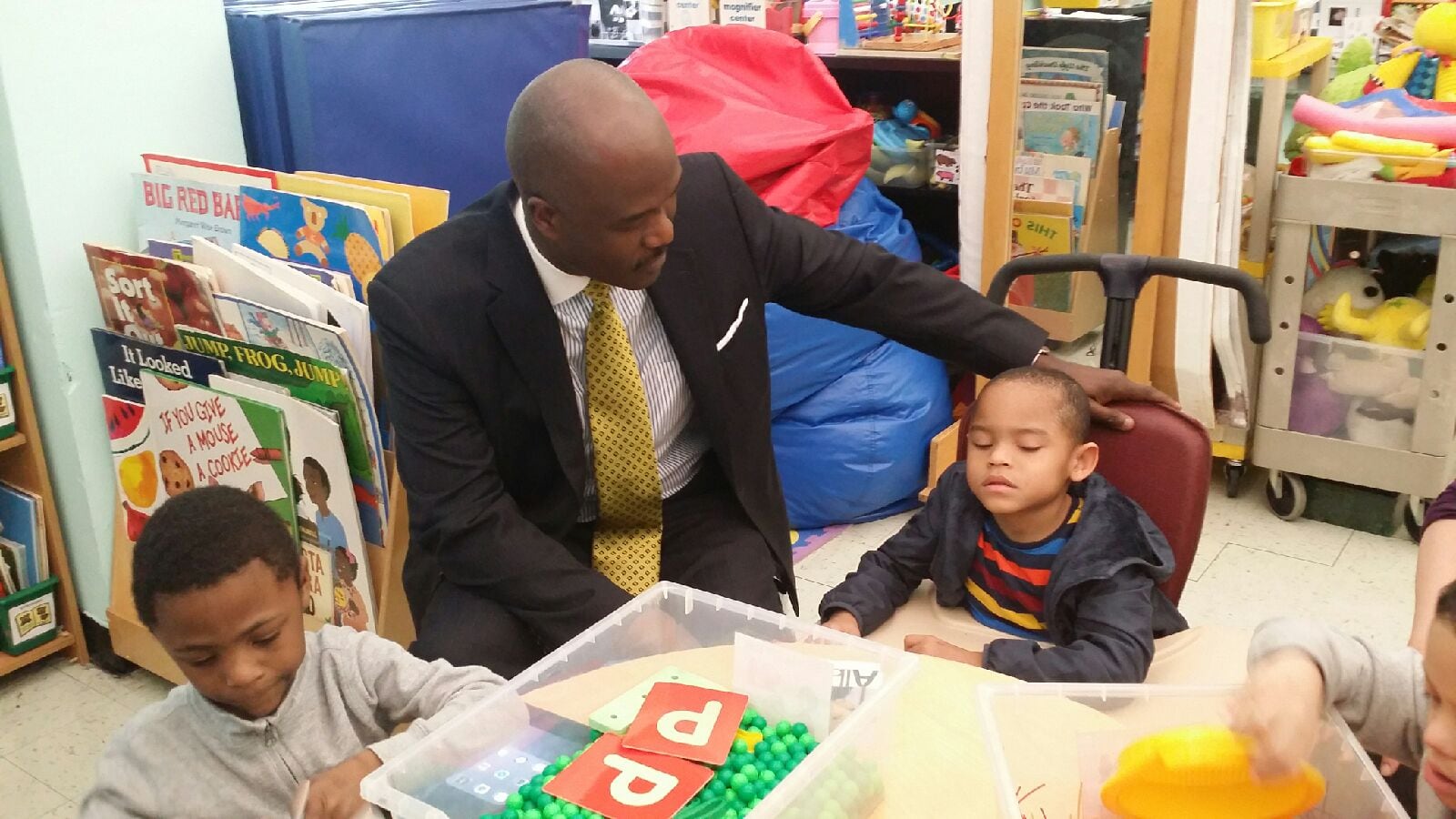Until recently, the logic behind New York City’s approach to educating students with severe disabilities had often boiled down to this: Sometimes, segregation is a good thing.
But as more of those students have been funneled into traditional classrooms over the past five years, what happens to the programs that were initially designed only for the most profoundly disabled?
That’s one of the overarching questions facing Ketler Louissaint, the newly appointed superintendent of District 75. The little-discussed group of about 60 schools scattered across more than 310 locations serves 24,000 students who have such complicated disabilities that they cannot be taught effectively in mainstream schools.
Louissaint started his career 30 years ago as a paraprofessional in a special education classroom in Jamaica, Queens, and was partly inspired to work with high-needs students because his sister is disabled. “I really fell in love with the students there, and I know that I needed to step up and make a difference in their lives the same way I would have wanted to come in and help my sister,” Louissaint said in a recent interview.
As Louissaint begins to permanently lead District 75 – after briefly serving as its interim leader replacing education department veteran Gary Hecht – here are four questions he will face from advocates, parents and reporters:
1. What is District 75’s mission in the context of reforms designed to put more special needs students into mainstream classrooms?
When education officials started pushing more students with disabilities into their local schools five years ago, that effort didn’t focus on students with the most complicated needs. Now, creating a more fluid relationship between District 75 and other schools is one of the system’s top special education priorities, Louissaint said, along with creating more vocational opportunities.
Schools Chancellor Carmen Fariña echoed that philosophy Monday in testimony to city lawmakers. “One of the things I’ll be discussing with [Louissaint] is how do we integrate District 75 students and programs into the life of the public schools,” she said. “If there’s a District 75 student who’s perfectly capable of doing the math curriculum or getting involved in after-school programs, that should all come together.”
2. Is it possible the district will shut down entirely?
Fariña said Monday the changes at District 75 don’t mean the city is considering doing away with the district, and Louissaint underscored that point. “I have had many conversations with the chancellor and she has always confirmed to me that she’s not about to dismantle District 75,” he said.
Advocates who have been pushing for more inclusion for the district’s students say it should continue to exist, even though figuring out exactly who it is for “is a really hard question,” according to Maggie Moroff, special education policy coordinator at Advocates for Children. Even though District 75 might sometimes operate “a little bit counter to theories of inclusion, it’s also necessary for many,” she added.
3. How do we know whether District 75 is actually serving students well?
Parents and advocates have long criticized the city for not releasing public measures of success or failure for the district, as it does for the rest of the city’s schools. That’s about to change: By the end of this school year, the district will generate “fair and useful reports to best inform students, parents, educators and community members on how their District 75 program is performing,” according to spokeswoman Toya Holness.
Accountability reports for other schools are based on several measures including school surveys, an evaluation by an experienced educator, and test scores. How those measures could be used to assess District 75 schools is unclear.
4. Black and Latino students represent 78 percent of District 75 but just 66 percent of the rest of the system. What explains the discrepancy and are district leaders trying to address it?
The district has sometimes been viewed as a dumping ground for students with emotional or behavioral problems, but who have no cognitive deficits, Advocates for Children’s Moroff said. That attitude could disproportionately affect black and Latino students.
Louissaint responded to those numbers by pointing out they reflect national trends. (Indeed, black and Latino students across the country are overrepresented in special education by a wide margin.) “I don’t look at my students through race or religion or whatever,” he added. “I look at each student individually, what the student needs to ensure that whatever the need is, that’s what we provide the student with.”

